By Rick VanSickle
A chance encounter online led to the wildest exposure ever for a Niagara winery with 2.5 million views of a quirky video that helped shape the “vibe” at Palatine Hills Estate Winery.
It’s a crazy story that has put this family-owned Niagara-on-the-Lake winery on the vinous map far beyond the borders of Ontario and as led to a mutually beneficial relationship with one of North America’s most popular online celebrities.

That internet star is Kaitlyn Bristowe with 1.8 million followers on Instagram alone and her wine brand, Spade and Sparrows with 155,000 followers plus her YouTube channel, and well, you name it, she’s on it. She is a Canadian television personality best known as a contestant on the 19th season of ABC’s The Bachelor, and as the lead on the 11th season of The Bachelorette. Bristowe also won Season 29 of Dancing with the Stars, with partner Artem Chigvintsev.
It all came about when Johnny Neufeld, one of two brothers who own and run the estate winery, was “doing some fishing” online when he reached out to B.C. wineries to see if they needed any Niagara grapes to help with their grape shortage. Somehow, the husband of Bristowe’s business manager was looking for a new Canadian winery to make the Spade and Sparrows brand of wines north of the border. Bristowe, who is from Alberta, but now lives in Nashville, has an American version of Spade and Sparrows, but needed a new supplier for her Canadian version when B.C. suffered catastrophic winter damage to their vines. The connection was made, and things moved quickly.
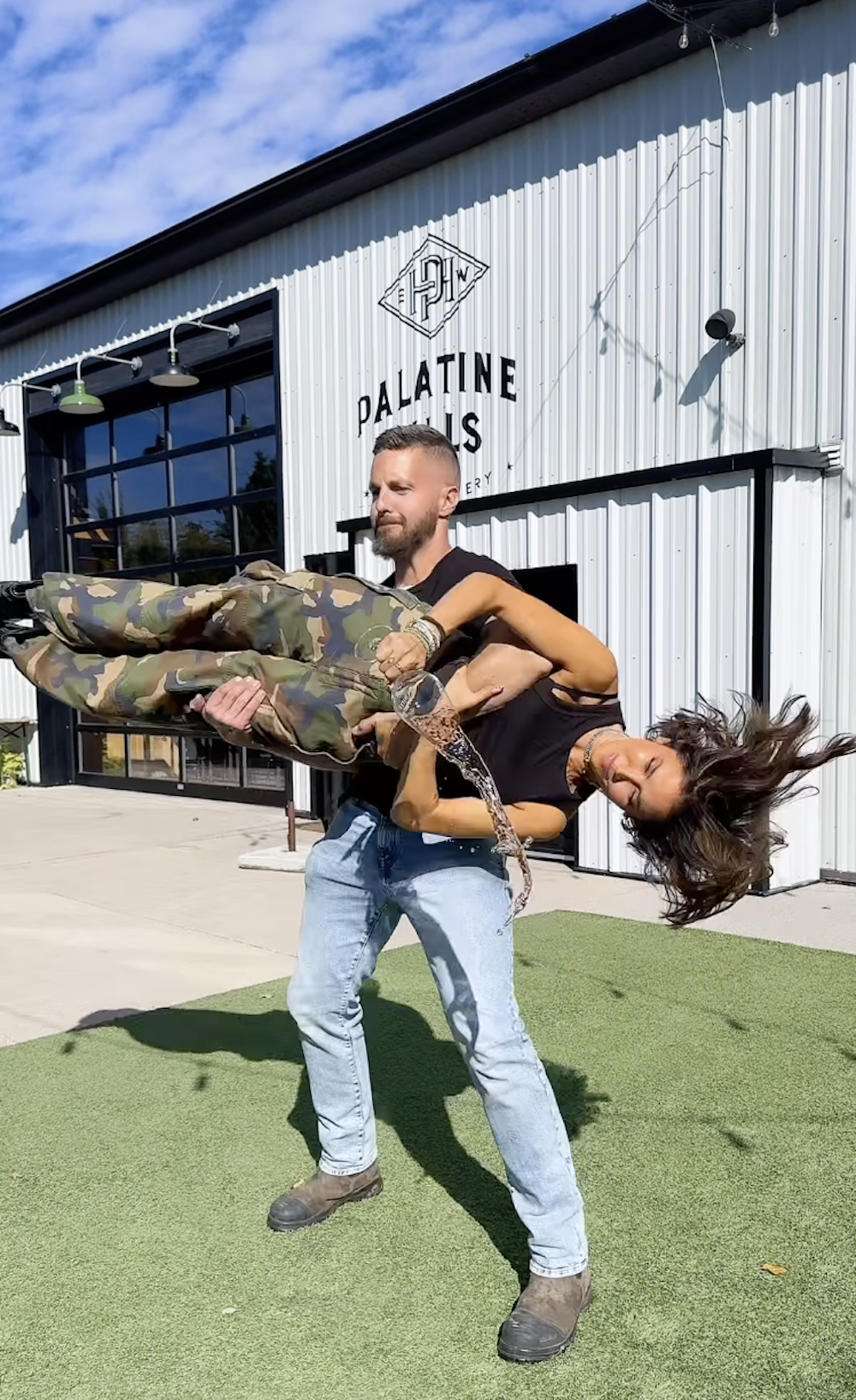
“Their branding and vibe, it seemed like a good opportunity,” said Johnny Neufeld, below. It wasn’t long before Bristowe and her team were in Niagara and blasting video after video of their crazy antics at Palatine Hills across the internet. The one that really caught fire was the “flip” video, seen here, where Johnny Neufeld picks up Bristowe like a rag doll and twirls her 360 degrees with a full glass of red wine in her hands. It struck a nerve with her online community and put Palatine Hills front and centre. And, just for fun, check out this awesome Trump video put together by the Neufelds here.
The Palatine Instagram feed is now an interesting mix of fun, quirky content all generated by the team at the winery, which seems to fit perfectly with the new vibe at the Lakeshore Road winery and also the perfect tone for the winery’s Ramblers tier of wines. “It’s about a lifestyle,” says Johnny’s brother Charles. “It’s not pretentious, it’s a genuine style of content. There’s not a day that goes by where we aren’t laughing at something or someone.”

Palatine Hills now makes and bottles the Canadian version of Spade and Sparrows, a fun line of wines available through the brand’s Spade and Sparrows Canadian Wine Club here, branded as “great wine, without the rules — a wine brand and community.”
I sat down recently with the Neufeld brothers and new winemaker Vadim Chelekhov, formerly of Kacaba Vineyards to taste through a complete range of wines and tiers.
Palatine Hills is family owned and operated. The farm was founded by John and Barbara Neufeld. Early on they recognized the potential their land had and a vision for what they wanted their vineyard and winery to become.

Winemaking begins in the vineyard and that’s a founding principle of the Neufeld family that still rings true today. As expert grape growers, the family has taken pride in growing and transforming Palatine Hills for decades, pushing the boundaries of what it means to be a winery.
Fast forward to today, Palatine Hills remains a family affair, with two generations of Neufeld’s bringing their passion to the winery and all that they do.
The farm has 102 acres under vine with the full range of grapes that grow best in Niagara, including Cabernet Sauvignon, Merlot, Cabernet Franc, a smidge of Baco Noir, Vidal, Sauvignon Blanc, Pinot Gris, Chardonnay, Viognier, Semillon and Riesling.
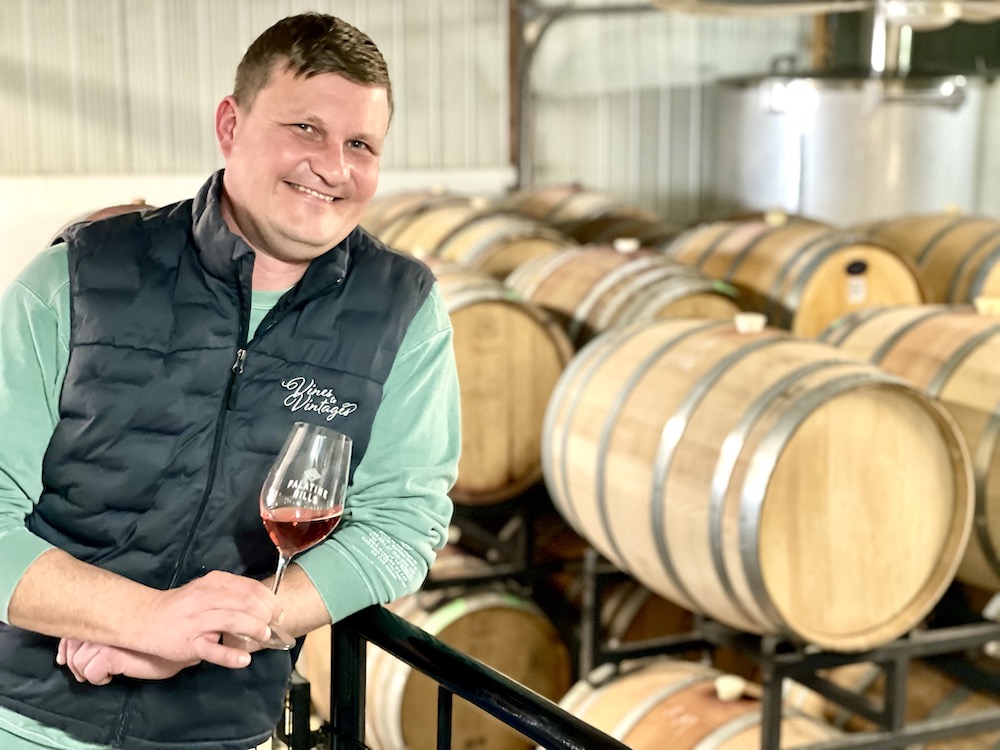
We tasted through several tiers of wines from the Ramblers series, a smartly priced tier that has good representation through the LCBO, The Palatine Hills estate tier, which ranges from the new $11 Oh Goody! Rosé (the best value wine I have tasted in Niagara and about to take the LCBO general list by storm) to single-variety estate wines, to the more premium Overtime series featuring outstanding Bordeaux-variety reds deserving of your cellar. The estate also makes cider and cream liqueur.
Here’s what I liked from the lineup; in the order they were poured by winemaker Chelekhov (above), who, by the way, had a hand in making all these wines (plus harvested and made the 2024 wines from start to finish) at some point even though he only took the full-time job last job.
The White Wines
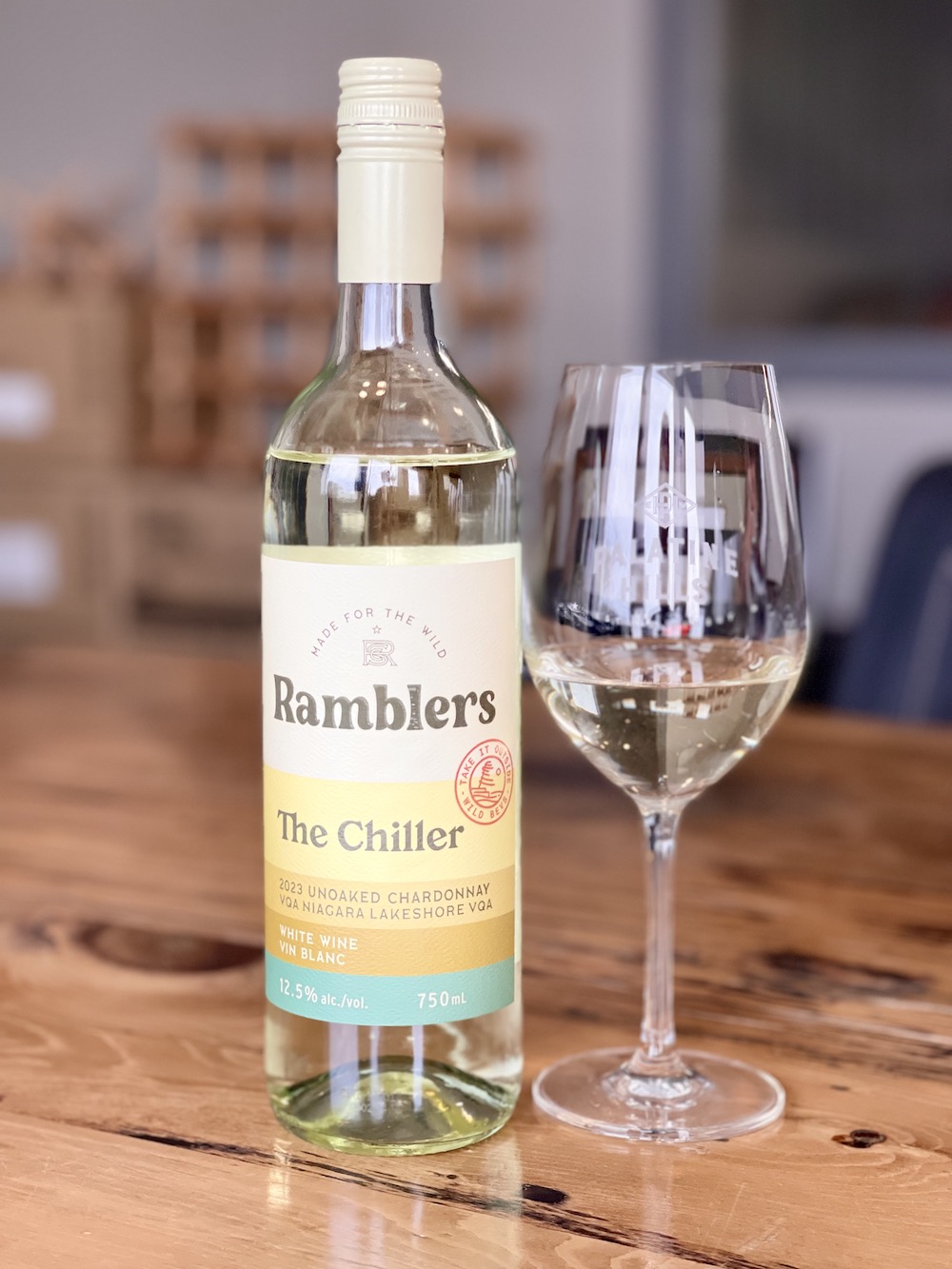
Ramblers The Chiller Unoaked Chardonnay 2023 ($15 with $2 off at the LCBO until April 7, 88 points) — The Ramblers series is part of the shift at the winery to not be so “pretentious.” They are built with the LCBO in mind with catchy labels at an attractive price for everyday drinking. With no oak aging in the wine the nose shows lovely freshness, orchard fruits, apricots and some tropical notes. It’s rounded on the palate with ripe fruits and a squeeze of lemon on a brisk finish. Simple and delicious.

Palatine Hills Sauvignon Blanc 2023 ($20, 90 points) — This is a lovely, fresh and fragrant Savvy with a vivid nose of kiwi, gooseberries, lemon/citrus, green apples, hay and light herbs. It’s lively on the palate with more kiwi, some tropical notes, garden herbs, mineral-tinged with a brisk, lifted finish. This was finished in stainless steel with no malo.

Palatine Hills Viognier 2023 ($23, 90 points) — This is only the second vintage of the estate Viognier, which was only planted nine years ago. It was made in two parts. One part was crafted entirely in stainless steel the second part was aged in neutral French oak barrels for a short time. Both parts were blended before bottling and gently filtered. The nose shows ripe apricot, melon, white peach, blanched almonds, a pinch of spice and lifted florals. There is some weight and viscosity on the creamy palate with apricot tart, juicy peach, some tropical notes, spice on a luxurious finish. Very nice Vio.
The Rosés

Ramblers Dreamer Cabernet Rosé 2024 ($15, LCBO later this spring, 89 points) — The blend is 87% Cabernet Franc, and 13% Merlot made using the saignée method. It shows a light pink hue in the glass with a nose of ripe strawberries, cherries, herbs and a squirt of citrus. The red berries on the palate are ripe, but this is on the drier side with added lemon zest and watermelon on a vibrant, lifted finish.
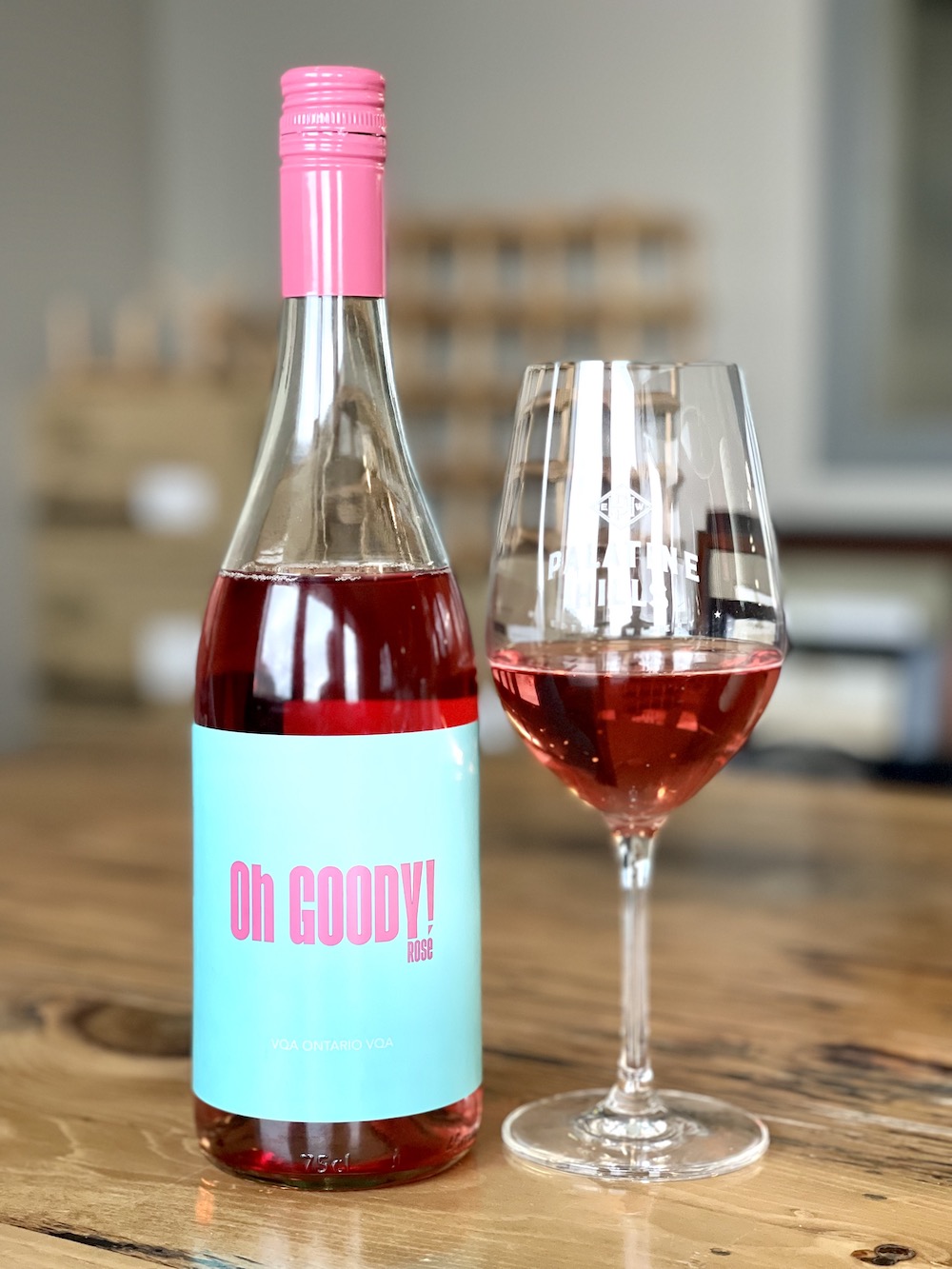
Palatine Hills Oh Goody! Rosé NV ($11, LCBO, 88 points) — I don’t know how anyone can make money selling an $11 wine from estate vineyards at the LCBO with all those hidden fees and levies. But here we are, and the Neufeld brothers and Chelekhov couldn’t be prouder with what they’ve created at this impossible price (is there another VQA rosé or any wine from Niagara priced lower?). “It’s an interesting play for us,” Charles Neufeld says. “The packaging was made for an impulse buy.” With it’s bright label of hot pink type on a turquoise background and the simple words Oh Goody Rosé, it will stand out in a crowd on LCBO shelves. Which is a good thing because they made 3,000 cases of it! That’s just under 25% of the total case production at the estate. So, is it any good? I was surprised by the quality, to be honest. This is a lovely, crowd-pleasing rosé made from all estate 54% Merlot, 44% Riesling and the rest Cabernet Franc (for colour, mainly). It’s pretty in pink in the glass with wild raspberries, subtle herbs, red cherries and cranberries. There is a touch of sweetness on the palate, more from the ripe red berries than the RS (which is 8.1 g/l) with added zesty citrus, red currants and a clean, refreshing finish. Looking for a pool/patio wine this summer? At $11 a bottle, it’s a steal!
The Red Wine
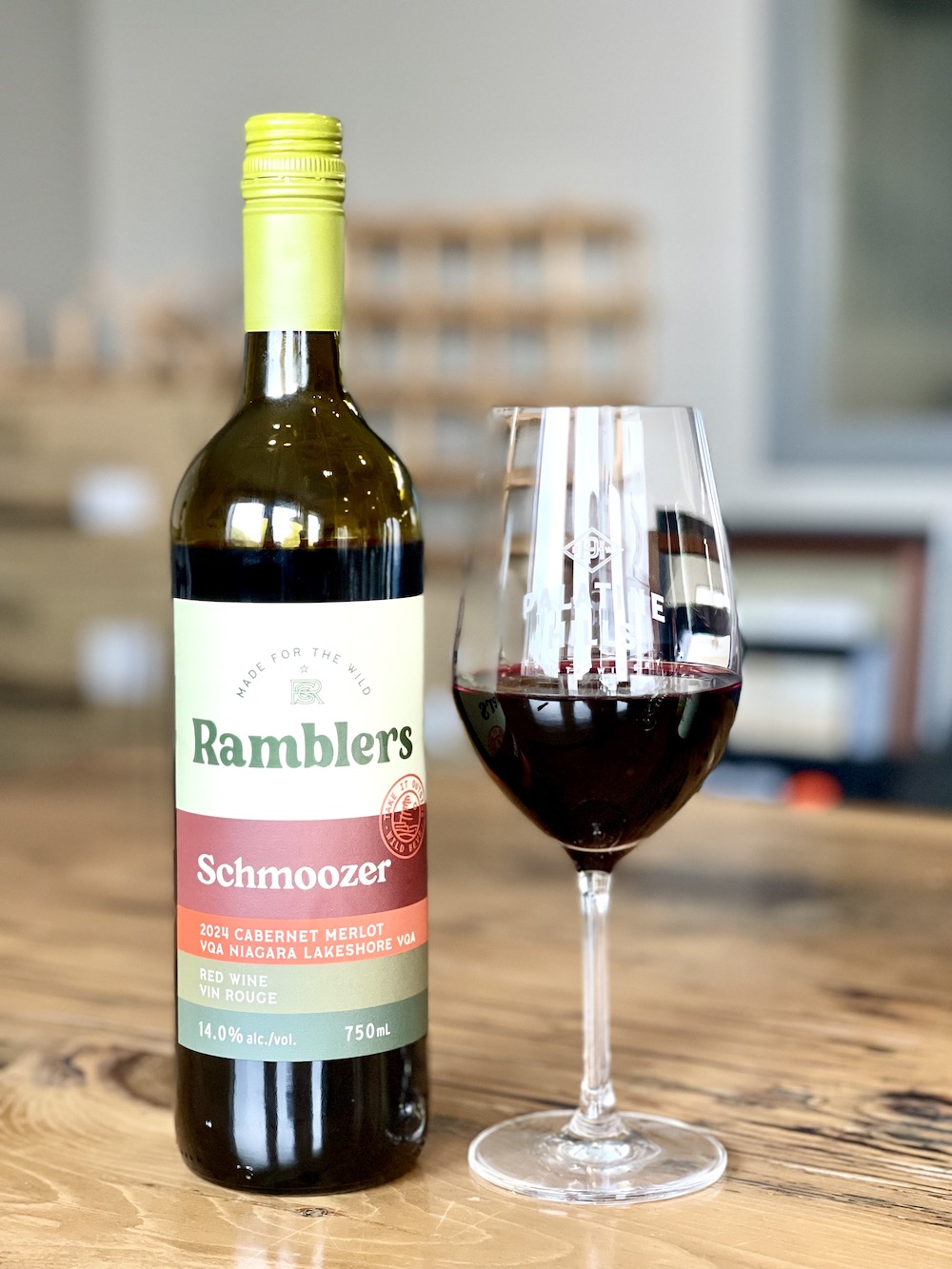
Ramblers Schmoozer Cabernet Merlot 2024 ($16 with $2 off at LCBO, 88 points) — The Schmoozer is made from 51% Cabernet Franc and 49% Merlot all grown at the estate. It has a ripe and rockin’ nose of black cherries, cassis, anise, plums and a touch of earthiness. The ripe tannins add some structure to the palate, which highlights ripe red and dark berries, licorice, mocha and spices on a tangy finish.
The Reserve Overtime Series
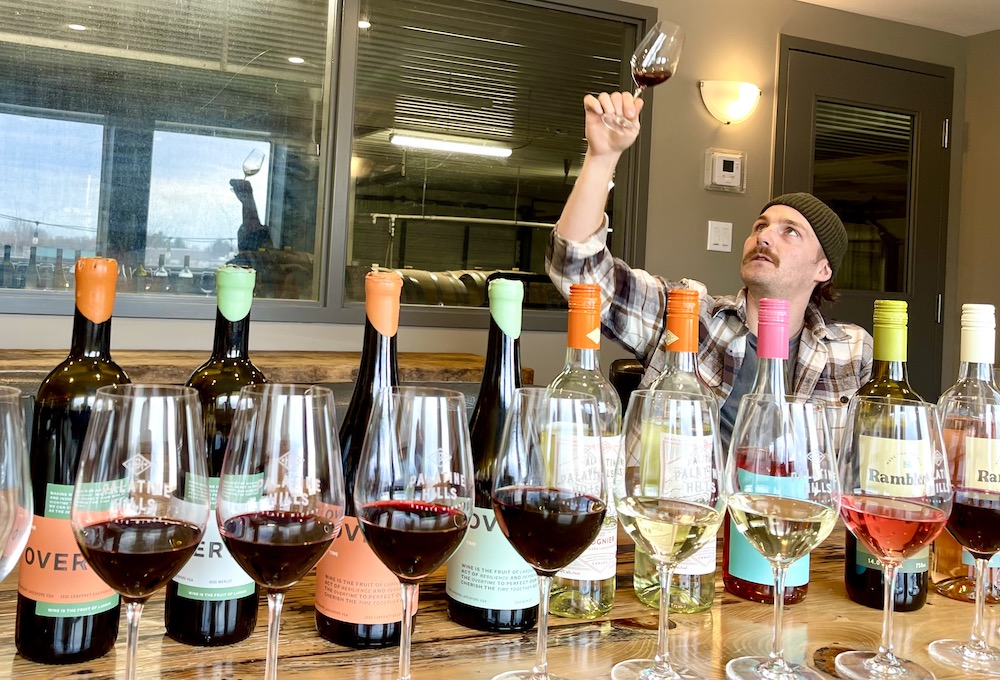
The redesign of the reserve series at Palatine is named Overtime because of “our labour of love … and all the overtime we put in to make it,” says Charles Neufeld, above. It’s not just a striking new label, the wines are built to cellar even though they arrived on shelves after three and half years aging in a mixture of French and American oak. All four wines below are in the 15.5% range of abv. Here’s what I liked:
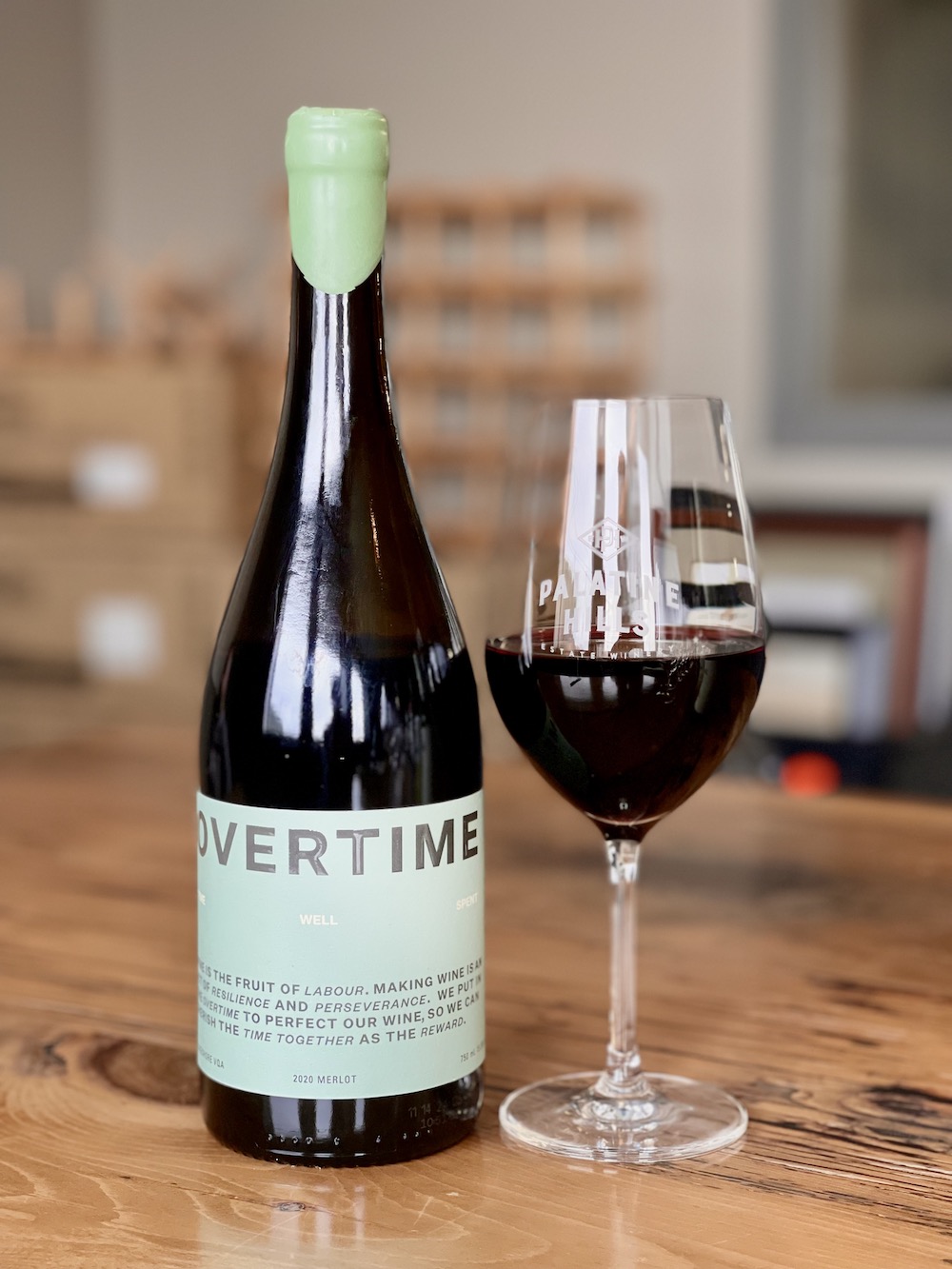
Palatine Hills Overtime Merlot 2020 ($40, 93 points) — This was aged in a combination of five barrels of French oak and one barrel of American oak, all neutral, for three and half years. It has a beautiful, enticing nose of ripe black currants, succulent cassis, cherry kirsch, purple plums, cocoa and rich spice notes. It’s a muscular Merlot with a firm tannic backbone in support of an array of dark berries, jammy raspberries and cherries, chocolate, fine oak spice and a super long, complex and layered finish with mouth-watering acidity. This is a long-lived red and can be cellared to the 2035 and beyond.
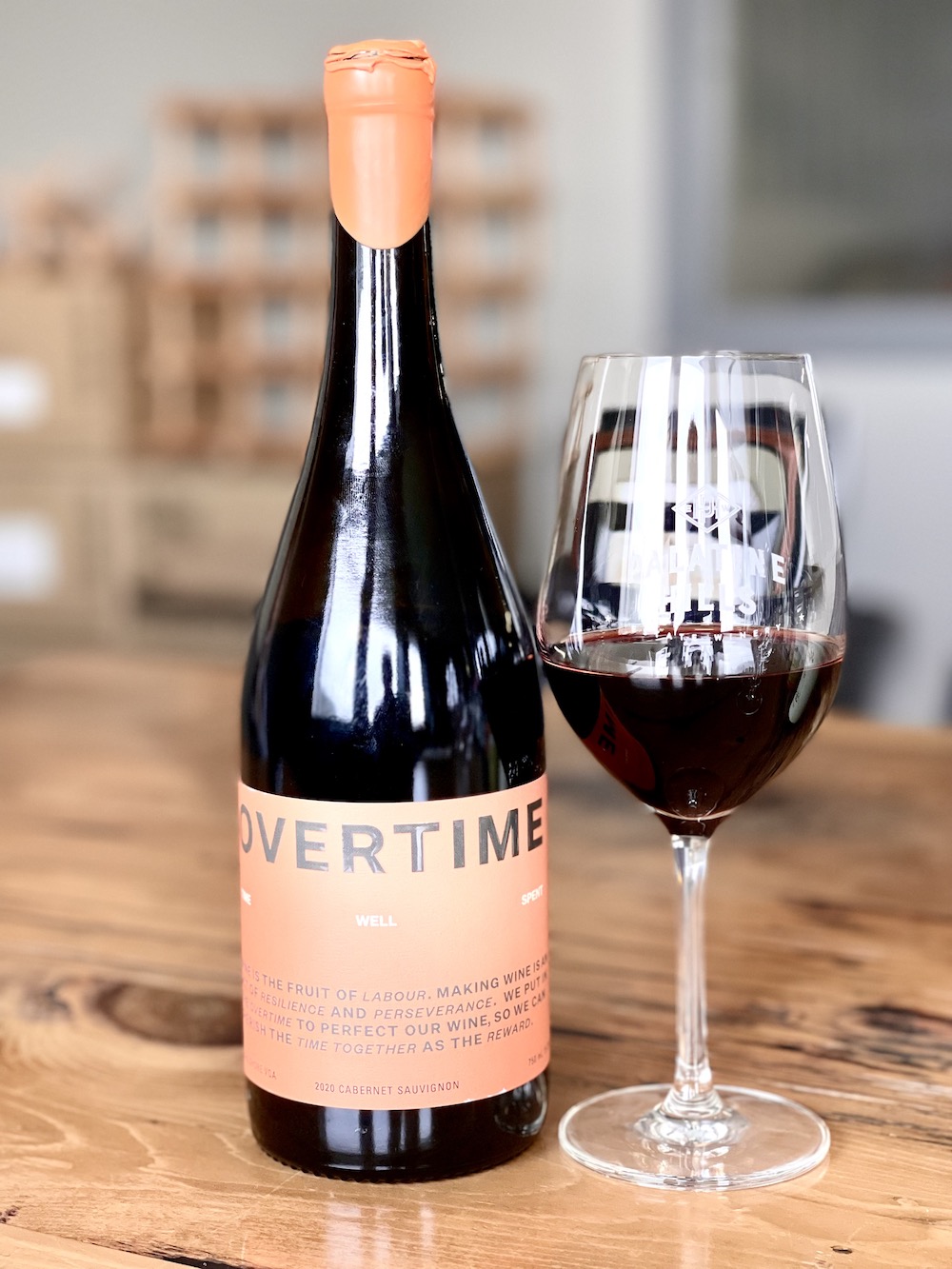
Palatine Hills Overtime Cabernet Sauvignon 2020 ($40, 93 points) — The Cabernet Sauvignon is made similarly to the above wine aside from this being aged in four French barrels and one American. It has an attractive nose of ripe blackberries, currants, cherry/kirsch, toasty vanilla, rich spice notes and subtle earthy/savoury notes. The palate shows super concentrated dark fruits, macerated cherries, anise, tar notes, and baking spices on a firm bed of tannins and all leading to a long, finessed finish. Cellaring potential is similar to the Merlot above, with potential to age to 2035 and start checking them after that. All these 2020 reserve reds from Palatine have to potential for 10 to 20 years of evolution.

Palatine Hills Overtime Reserve Merlot ($80, 95 points) — So, what makes a “reserve” level Merlot and Cabernet Sauvignon? It’s all in the oak. Both these wines are made with the finest oak at the estate, Tonnellerie de Mercurey from France, that’s aged for the same three and a half years, but these are aged in a combination of puncheons and barriques. This the definition of power and grace, and it begins on the nose. There’s a lovely wood perfume note on the nose followed by cherry/kirsch, anise, black currants, ripe plums, crème de cassis, elegant spice notes and toasted vanilla bean. It has a muscular feel on the palate with grippy tannins and then a layered and complex melange of ripe dark berries, rich dark cherries, plums and those elegant spice notes on an echoing, lifted finish that lasts for minutes. Can cellar this beauty through 2038.
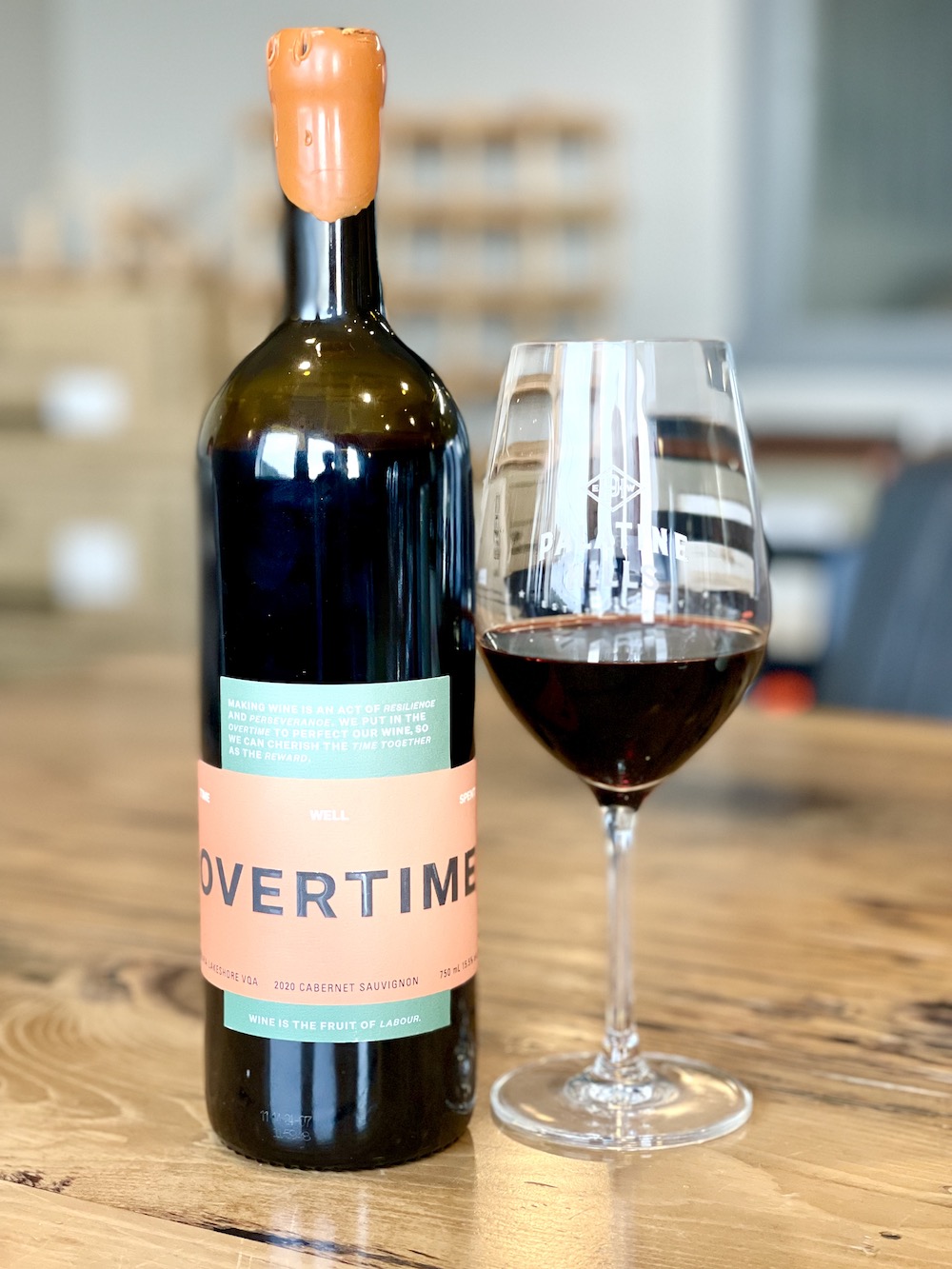
Palatine Hills Overtime Reserve Cabernet Sauvignon 2020 ($80, 94 points) — Made essentially as the wine above, the 100% estate Cab Sauv has a super saturated nose of cassis, black currant jam, savoury/earthy notes, graphite, tar, toasted vanilla bean and fine oak spices. This is tightly wound with youthful, grippy tannins, yet so full of promise with full-on ripe, dense dark berries, cherry concentrate, anise/licorice, dried tobacco and cedar, with elegant spices through a long, vibrant finish. It will evolve in the cellar for a decade or more. Gorgeous wine.
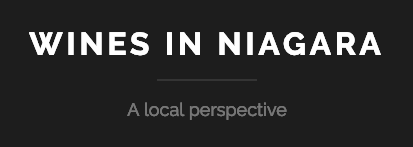







Comment here